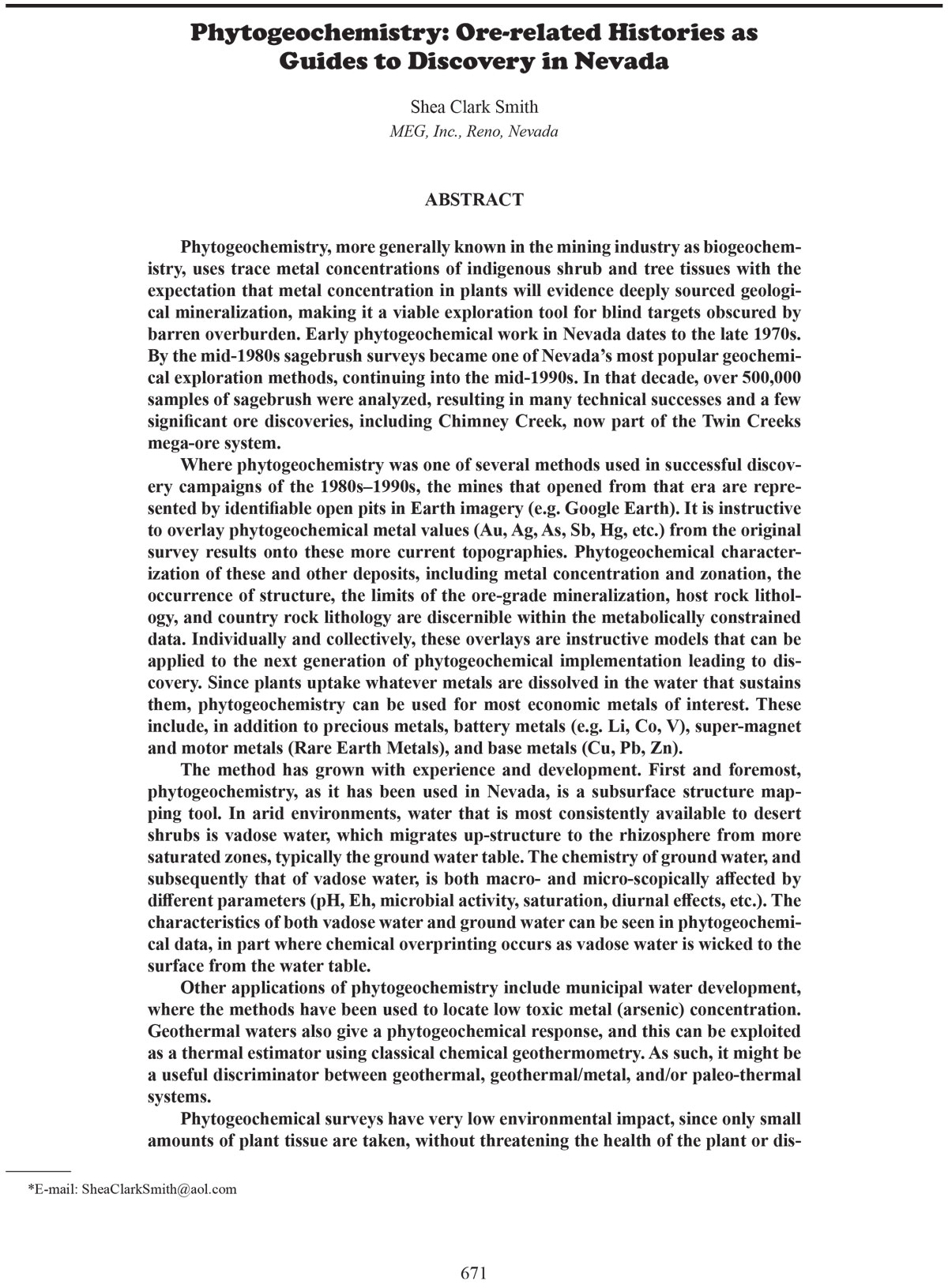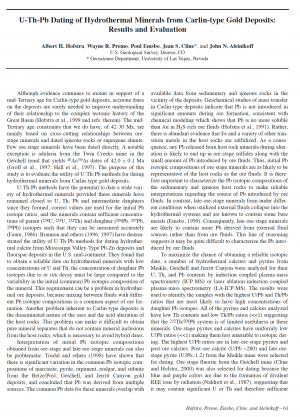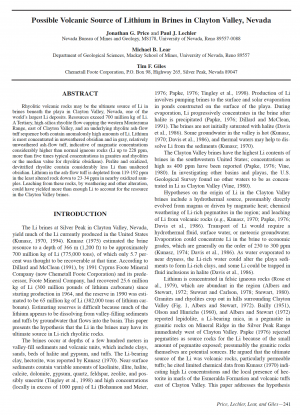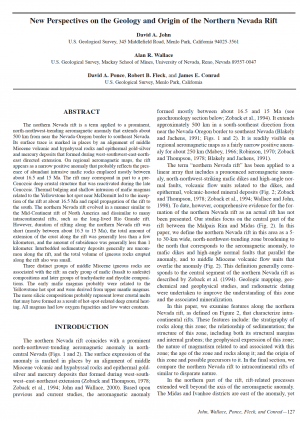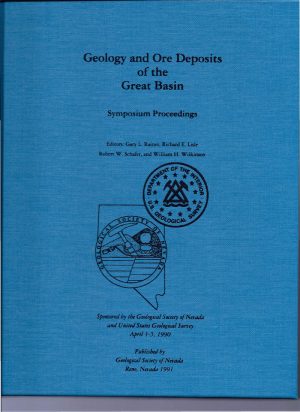Description
Phytogeochemistry, more generally known in the mining industry as biogeochemistry, uses trace metal concentrations of indigenous shrub and tree tissues with the
expectation that metal concentration in plants will evidence deeply sourced geological mineralization, making it a viable exploration tool for blind targets obscured by
barren overburden. Early phytogeochemical work in Nevada dates to the late 1970s.
By the mid-1980s sagebrush surveys became one of Nevada’s most popular geochemical exploration methods, continuing into the mid-1990s. In that decade, over 500,000
samples of sagebrush were analyzed, resulting in many technical successes and a few
significant ore discoveries, including Chimney Creek, now part of the Twin Creeks
mega-ore system.
Where phytogeochemistry was one of several methods used in successful discovery campaigns of the 1980s–1990s, the mines that opened from that era are represented by identifiable open pits in Earth imagery (e.g. Google Earth). It is instructive
to overlay phytogeochemical metal values (Au, Ag, As, Sb, Hg, etc.) from the original
survey results onto these more current topographies. Phytogeochemical characterization of these and other deposits, including metal concentration and zonation, the
occurrence of structure, the limits of the ore-grade mineralization, host rock lithology, and country rock lithology are discernible within the metabolically constrained
data. Individually and collectively, these overlays are instructive models that can be
applied to the next generation of phytogeochemical implementation leading to discovery. Since plants uptake whatever metals are dissolved in the water that sustains
them, phytogeochemistry can be used for most economic metals of interest. These
include, in addition to precious metals, battery metals (e.g. Li, Co, V), super-magnet
and motor metals (Rare Earth Metals), and base metals (Cu, Pb, Zn).
The method has grown with experience and development. First and foremost,
phytogeochemistry, as it has been used in Nevada, is a subsurface structure mapping tool. In arid environments, water that is most consistently available to desert
shrubs is vadose water, which migrates up-structure to the rhizosphere from more
saturated zones, typically the ground water table. The chemistry of ground water, and
subsequently that of vadose water, is both macro- and micro-scopically affected by
different parameters (pH, Eh, microbial activity, saturation, diurnal effects, etc.). The
characteristics of both vadose water and ground water can be seen in phytogeochemical data, in part where chemical overprinting occurs as vadose water is wicked to the
surface from the water table.
Other applications of phytogeochemistry include municipal water development,
where the methods have been used to locate low toxic metal (arsenic) concentration.
Geothermal waters also give a phytogeochemical response, and this can be exploited
as a thermal estimator using classical chemical geothermometry. As such, it might be
a useful discriminator between geothermal, geothermal/metal, and/or paleo-thermal
systems.
Phytogeochemical surveys have very low environmental impact, since only small
amounts of plant tissue are taken, without threatening the health of the plant or disturbing pristine surface features. Coupled with an ability to see mineralization tens to
hundreds of meters from the surface, there are few other surface geochemical methods with equivalently low impact and robust deep-seeking value.

